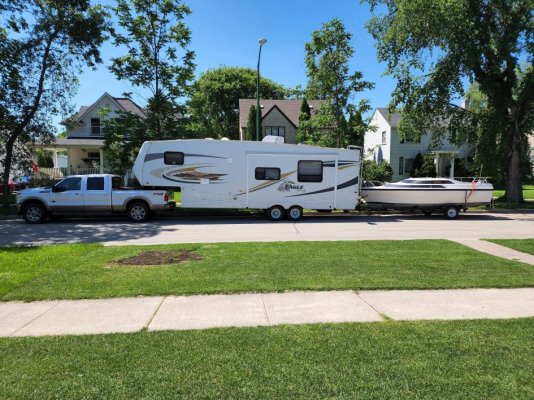Regarding the oft repeated tale that "fuel is the least of your expenses in boating", for us, it is the SINGLE GREATEST COST!
Our 87,000 boat burns right on 3.0 gallons/hour while cruising at 7 - 8 kts. Our generator is run off of the main engine while cruising, so the 3.0 gph includes all the 120v power we want. Sooooo, we cruised well over 4,500 miles so far this year, Alaska and back, and a lot of cruising here in the PNW. Cost of fuel consumed this year is about $9,500.00.
Second was moorage.
Dockside here in PNW for our 57' overall boat, and including electricity and $200/mo liveaboard fee (for two people), we pay roughly $725/month, and 4 months this calendar year we sublet out our slip as we were away.
Now, having said the above, our boat cruises very comfortably at 7-8 kts, We don't have to raise our voices at all to converse, and it's very comfortable. Although we have cruised as much as 110nm (15 hours) in a day, we much prefer to cruise 4 - 6 hours, roughly 35-40 nm tops. Some days we only go 5 miles and we're in a totally different place!
So, down to cost/day for fuel. If we cruise a comfortable 5 hours, at 7.5kts SOG, we travel 37.5 miles, and burn 15 gallons of diesel. At $5.60/gallon, that is $84.00 for the day, WAY short of your "hundreds of dollars per day" the OP quoted in his first post.
Moving right along, cost of fuel/day of travel doesn't tell an accurate story . . . . Many's the time we stayed 2, 3 days, or even a week in the same spot. Cost of fuel/day is exactly ZERO! (that's unless we run the hydronic diesel heat).
We installed 2,180 watts of solar cells and LiFePO4 batteries too, so unless it's really cloudy, or raining, we have no need whatsoever to run the generator. Solar even runs the two water heaters, fridge, freezer, and chest freezer just fine. We generally run the washer/dryer and the water maker when we're underway.
The biggest single cruising savings for us/our boat is that we have very little need or desire to tie up in marinas while we are cruising. Our longest trip this year away from our "home dock" was to Glacier Bay and back. 87 days, just under 3000nm, and 420 engine hours. Of that 87 days, we spent 11 days at marinas. 6 of those 11 days were when picking up/dropping off people at various airports. The rest of the time we anchored out.
Oh, and just for fun, check out the following boat, offered in the For Sale section here on TF. Perfect size for a starter boat, and plenty of room for a couple, or even two couples for short trips. Great for the Bahamas, shallow draft, good engine, and a STELLAR price! (subject to survey, of course). No affiliation, just saw it on the classifieds this morning.
https://www.trawlerforum.com/forums/s9/1990-marine-trader-36-sd-65807.html
Hope this helps




